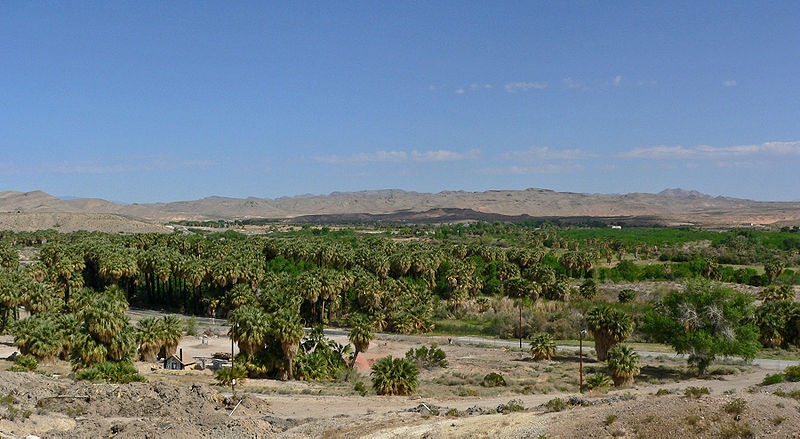Nevada’s latest test site
Posted on | December 13, 2010 | 1 Comment
We watch big newspapers for the big stories, but the bulletins foreboding grand scale tragedy so often start small, such as this item in the Moapa Valley Progress. It reports that last month the Southern Nevada Water Authority began pumping what will be more than 8,000 acre feet of water a year from Coyote Springs, just north of the authority’s main service area in the Las Vegas Valley.
The reporter’s awe is reserved for the $38m worth of plumbing laid in by Las Vegas prospectors to pump water from an aquifer serving the Muddy River and Moapa Valley National Wildlife Refuge. This is part of the northern Mojave’s unique system of springs, lakes and rivers, which, quite apart from feeding the lower Colorado River, sustain a complex network of wildlife, from migrating birds to desert tortoises to even desert fish such as the Moapa Dace.
According to many, the idea of draining the aquifer where the Great Basin and Mojave deserts meet to slake Las Vegas started at this site, back in the Cold War of the 1970s, when the intermountain desert’s system of valleys and ranges was proposed as a site for the rotating rockets of the MX Missile Project. Researchers poking around to see if there would be groundwater impacts stumbled upon what is often casually called the “MX hole,” which proved one hell of a well. The force of this gusher convinced a former USGS geologist to jump ship from public service to sell the idea of desert groundwater pumping to Las Vegas.
Fast-forwarding through a series of federal land swaps benefiting a Nevadan political fixer and developer, and a lurid set of plans involving a golfing resort and pumping operation for Las Vegas, by 2002, one of the few people not sold on the idea that the MX hole would gush in perpetuity was the Nevada state engineer, who insisted on test-pumping before granting walloping long-term water rights. The test pumping, begun last month, was the subject of last week’s Moapa Valley Progress article.
As tests go, it’s the millennial sort. The point is to stress an aquifer charged across thousands of square miles at the close of the last Ice Age on the presumption that as groundwater levels fall it will say “ouch” in a timely and safe enough way for local golf resort developers and the Las Vegas water authority to back off and save desert springs before they dry up and the wildlife that has evolved around them over thousands of years dies.
If the MX hole doesn’t say “ouch,” or the monitors don’t hear it, Las Vegas will be allowed to increase its pumping. Helping to monitor the impacts is the very agency pulling the water, the Southern Nevada Water Authority, whose spokesman was on hand recently with this reassurance for the local reporter: “… if any changes do register, there are a whole system of triggers associated with the test pump. The triggers dictate that certain actions must be taken depending on the circumstances. It might mean that we reduce or redistribute the amount of pumping that we do. Or in certain circumstances we might even have to cease pumping.”
A choice word here is “redistribute.” Would you trust a monitor whose solution to over-pumping one site was to move the pump?
In the balance of this test, part of a grand plan by Las Vegas that involves proposed wells for hundreds of miles around the Great Basin, lies the fate of two pristine deserts, the Great Basin and the Mojave. Both are on largely federal land — your land and our land. Their seemingly miraculous networks of life depend on an ancient aquifer filled with Ice Age melt then annually re-charged with scant winter and monsoonal rain.
For the Center for Biological Diversity’s take on the pumping, click here. For the view of seasoned hydrologists on the efficacy of monitoring, here. For the Southern Nevada Water Authority, here. For a network of groups that came together to oppose the pumping, here.
Hat tip to Aquablogmaven for listing the Moapa Valley Progress Story on Aquafornia.
Tags: chance of rain > Coyote Springs > Emily Green > Southern Nevada Water Authority
Comments
One Response to “Nevada’s latest test site”
Leave a Reply




December 13th, 2010 @ 12:01 pm
This is sad.